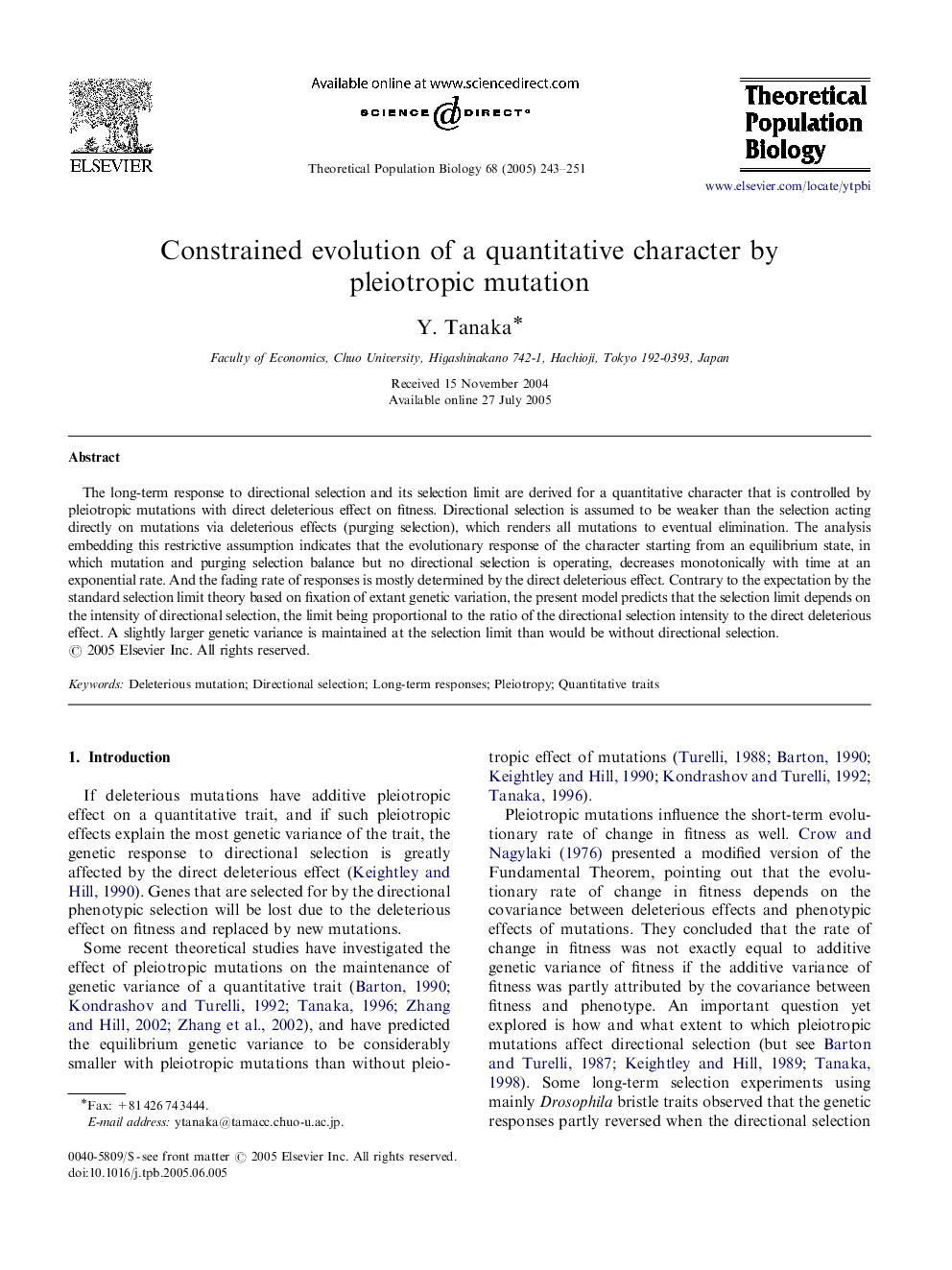| Article ID | Journal | Published Year | Pages | File Type |
|---|---|---|---|---|
| 9471450 | Theoretical Population Biology | 2005 | 9 Pages |
Abstract
The long-term response to directional selection and its selection limit are derived for a quantitative character that is controlled by pleiotropic mutations with direct deleterious effect on fitness. Directional selection is assumed to be weaker than the selection acting directly on mutations via deleterious effects (purging selection), which renders all mutations to eventual elimination. The analysis embedding this restrictive assumption indicates that the evolutionary response of the character starting from an equilibrium state, in which mutation and purging selection balance but no directional selection is operating, decreases monotonically with time at an exponential rate. And the fading rate of responses is mostly determined by the direct deleterious effect. Contrary to the expectation by the standard selection limit theory based on fixation of extant genetic variation, the present model predicts that the selection limit depends on the intensity of directional selection, the limit being proportional to the ratio of the directional selection intensity to the direct deleterious effect. A slightly larger genetic variance is maintained at the selection limit than would be without directional selection.
Related Topics
Life Sciences
Agricultural and Biological Sciences
Agricultural and Biological Sciences (General)
Authors
Y. Tanaka,
